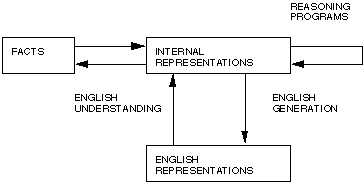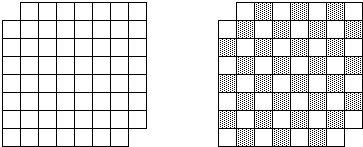
Let us first consider what kinds of knowledge might need to be represented in AI systems:
Thus in solving problems in AI we must represent knowledge and there are two entities to deal with:
We can structure these entities at two levels

Fig 5 Two Entities in Knowledge Representation
English or natural language is an obvious way of representing and handling facts.
Logic enables us to consider the following fact:
spot is a dog as
dog(spot)
We could then infer that all dogs have tails with:
![]() : dog(x)
: dog(x) ![]() hasatail(x)
We can then deduce:
hasatail(x)
We can then deduce:
hasatail(Spot)
Using an appropriate backward mapping function the English sentence Spot has a tail can be generated.
The available functions are not always one to one but rather are many to many which is a characteristic of English representations. The sentences All dogs have tails and every dog has a tail both say that each dog has a tail but the first could say that each dog has more than one tail try substituting teeth for tails. When an AI program manipulates the internal representation of facts these new representations should also be interpretable as new representations of facts.
Consider the classic problem of the mutilated chess board. Problem In a normal chess board the opposite corner squares have been eliminated. The given task is to cover all the squares on the remaining board by dominoes so that each domino covers two squares. No overlapping of dominoes is allowed, can it be done. Consider three data structures

Fig. 3.1 Mutilated Checker
the first two are illustrated in the diagrams above and the third data structure is the number of black squares and the number of white squares. The first diagram loses the colour of the squares and a solution is not east to see; the second preserves the colours but produces no easier path whereas counting the number of squares of each colour giving black as 32 and the number of white as 30 yields an immediate solution of NO as a domino must be on one white square and one black square, thus the number of squares must be equal for a positive solution.